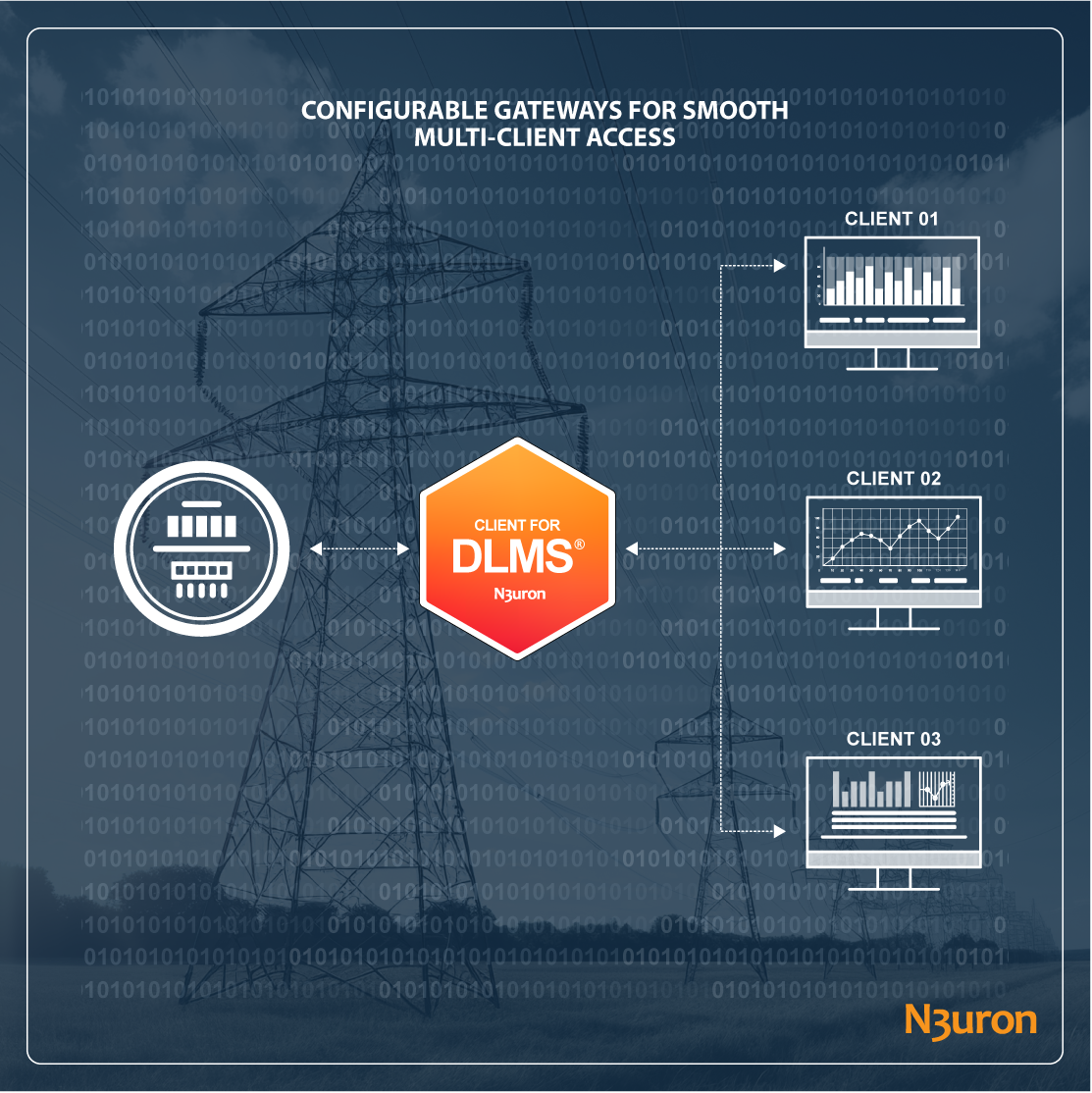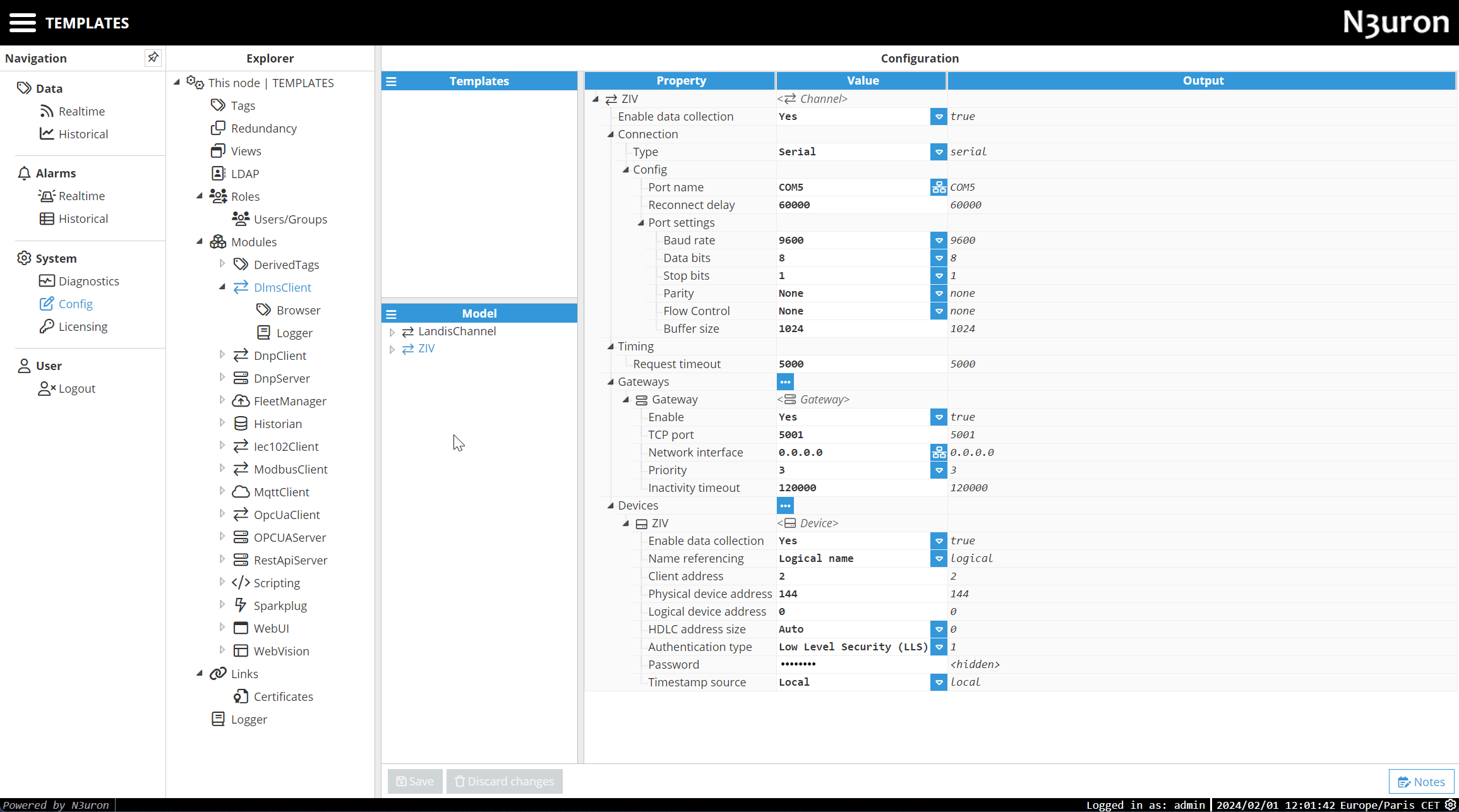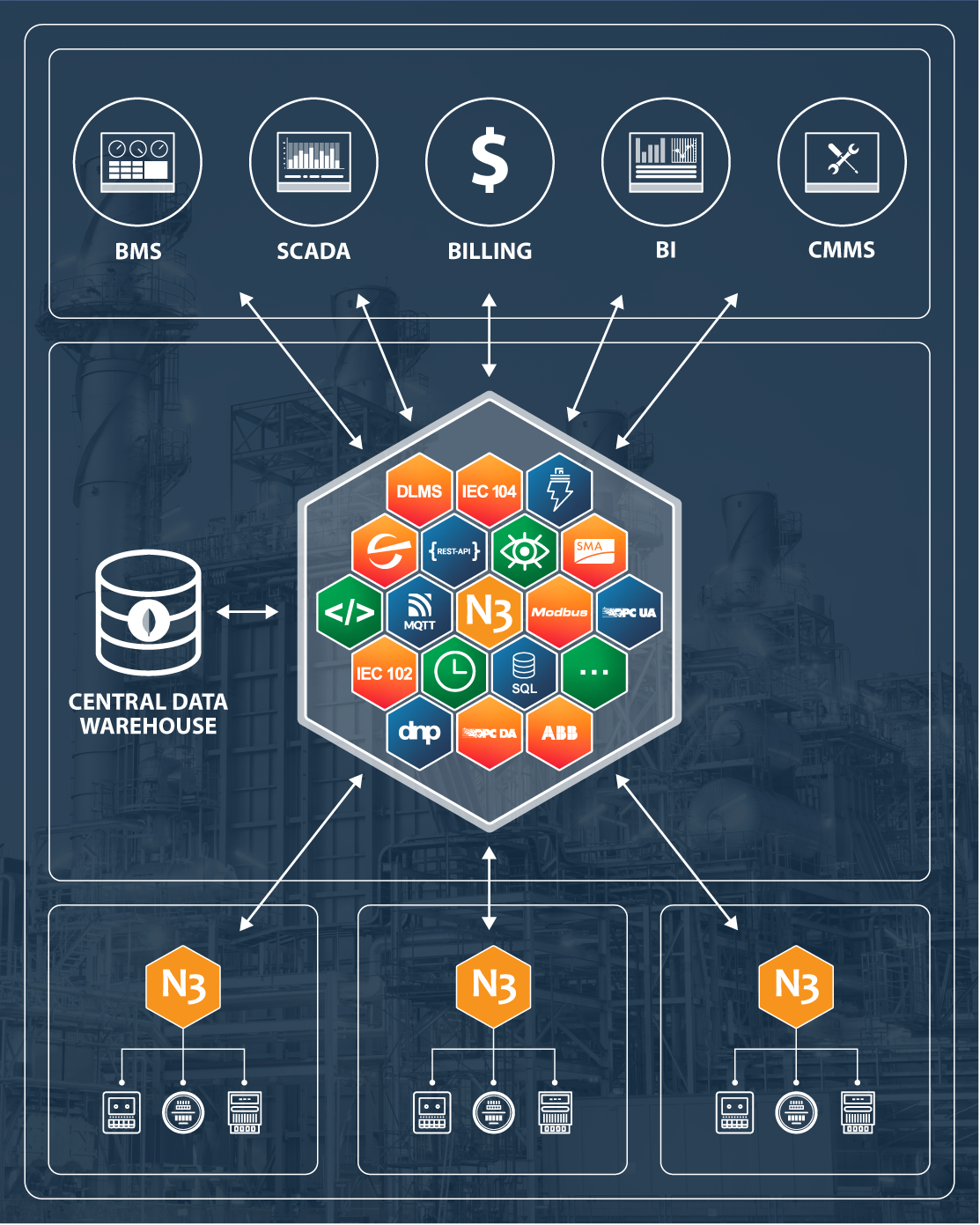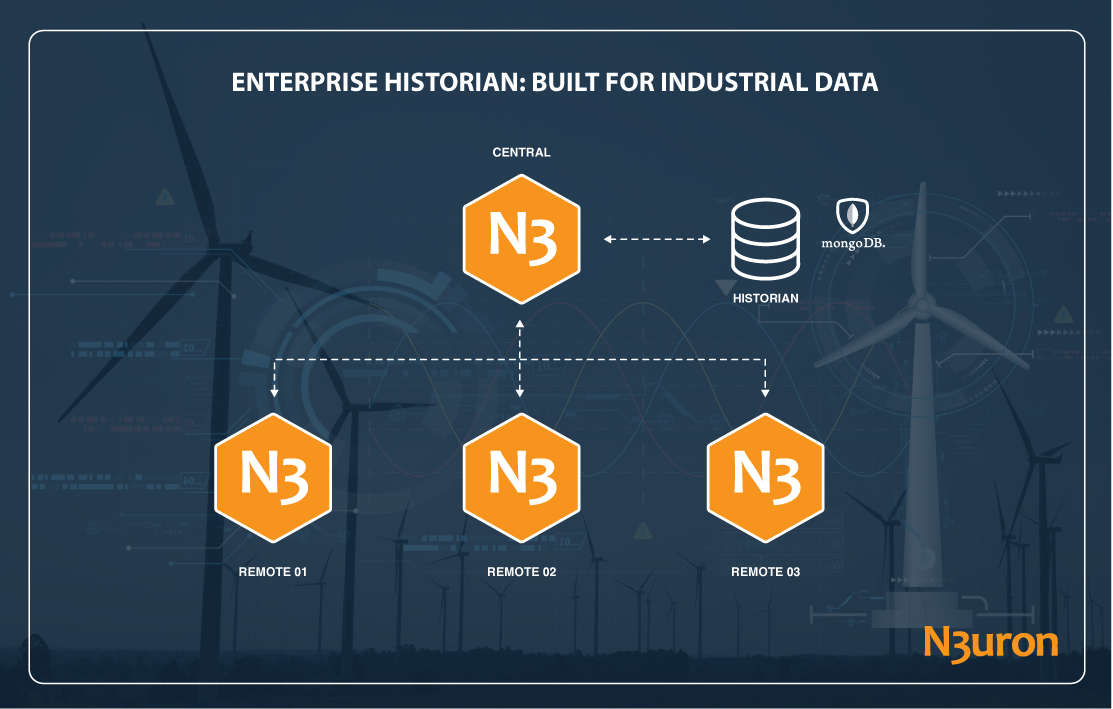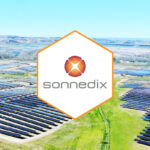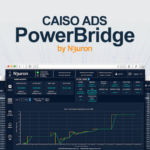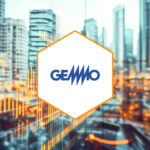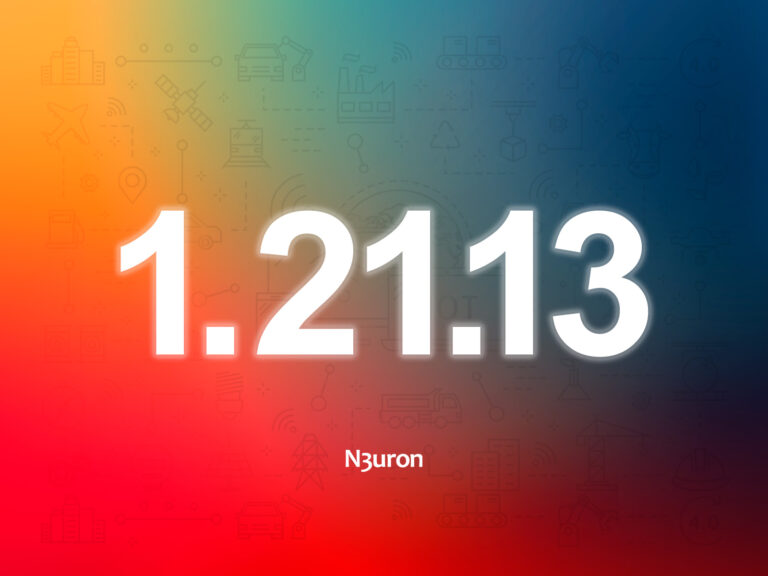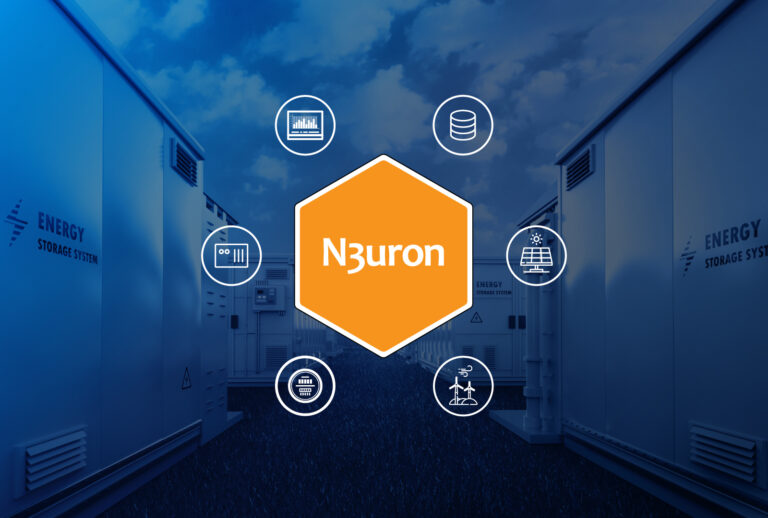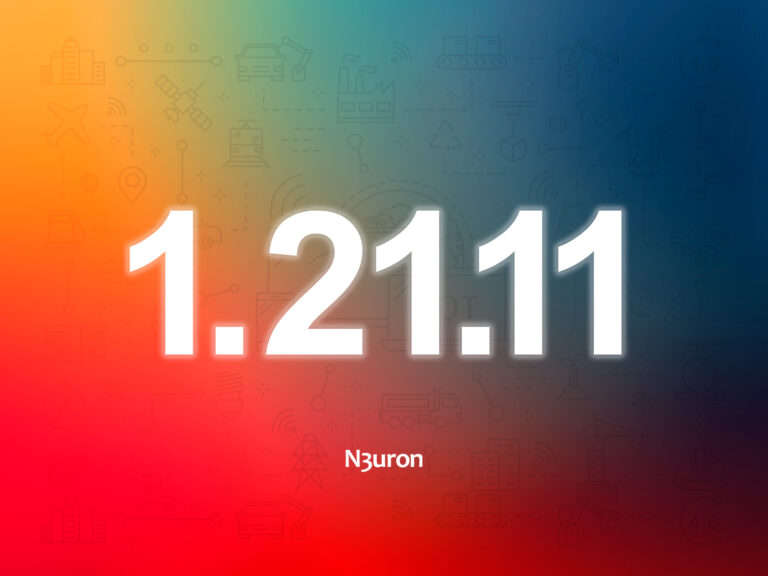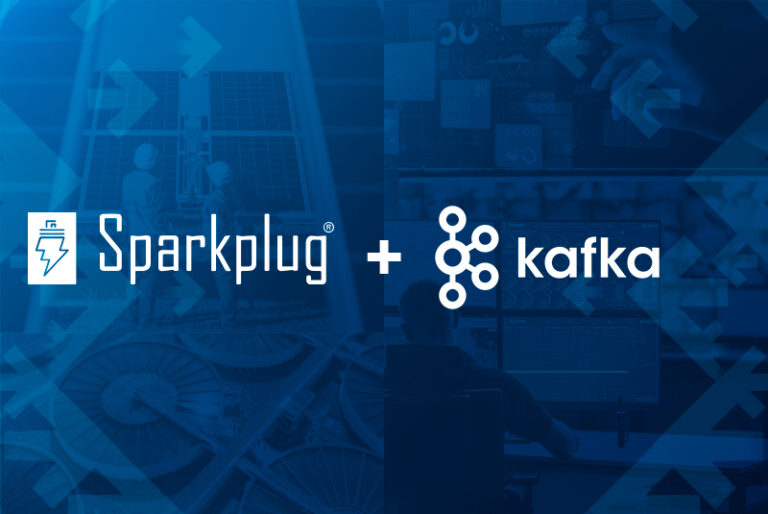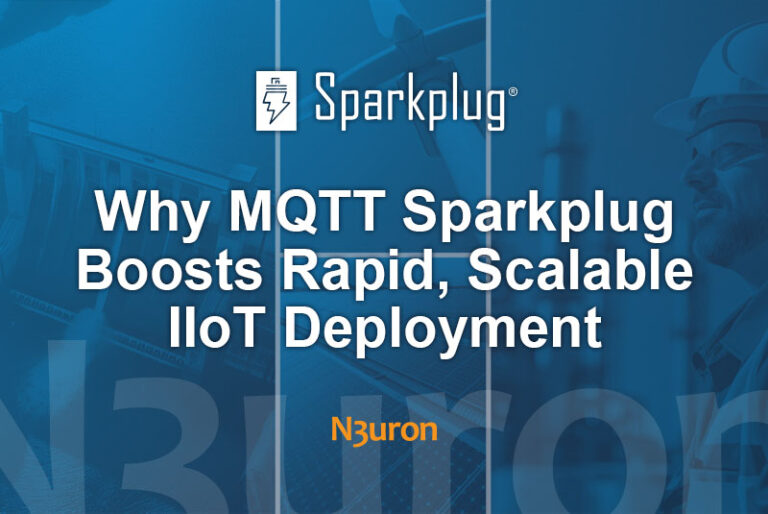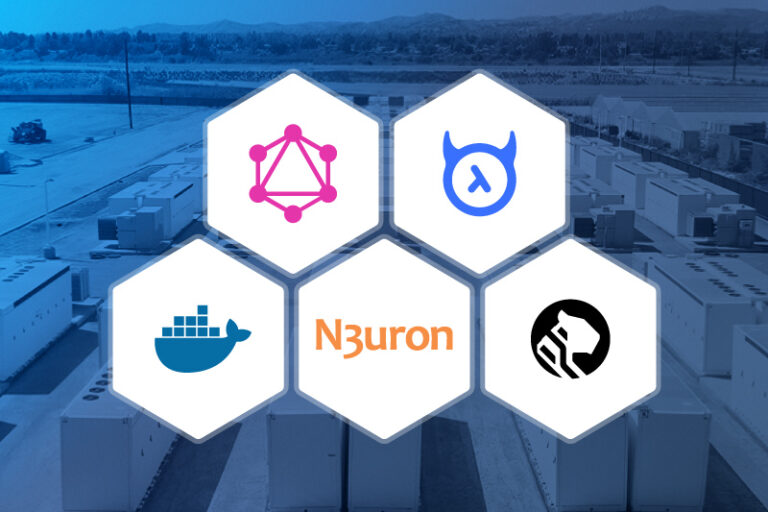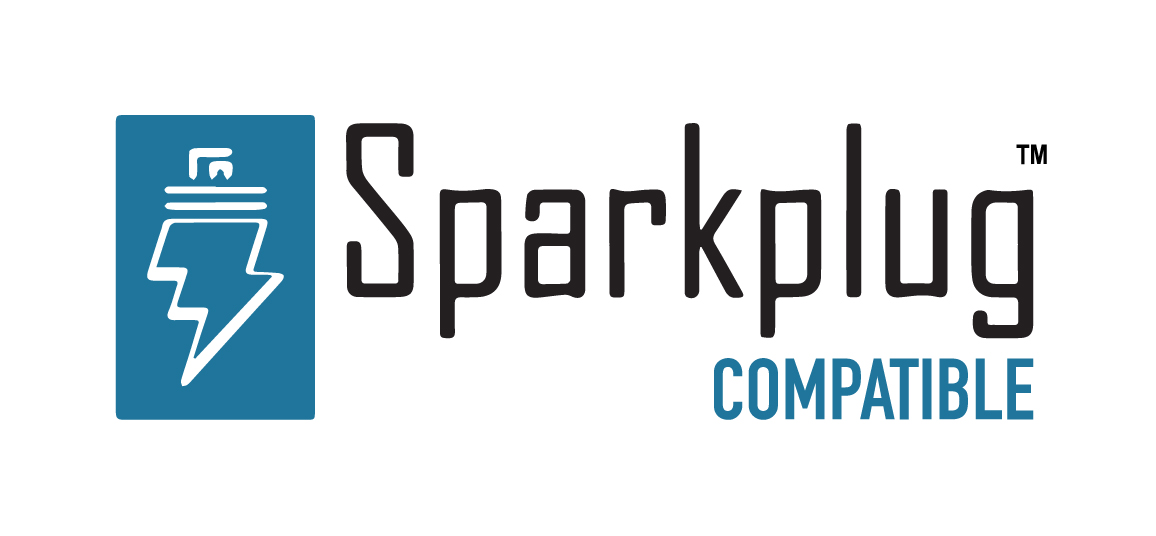RESOURCES / ARTICLES
How to Deploy a DLMS® Telemetry Solution with N3uron
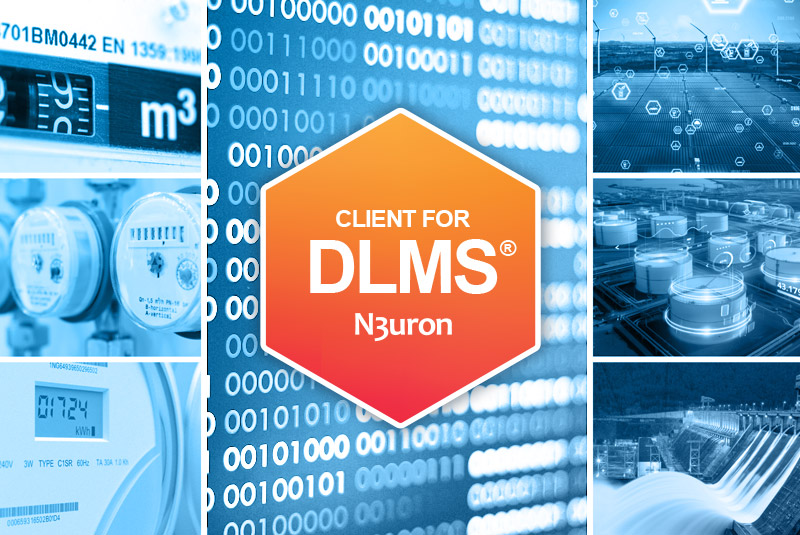
Eliminating the Obstacles of DLMS Telemetry System Implementation
What are the challenges of deploying a comprehensive DLMS® telemetry solution, and how does N3uron’s IIoT and DataOps platform solve them with its DLMS Client module? Let’s begin by identifying the value of a scalable, reliable DLMS® telemetry solution for the energy industry.
Utilities are looking to deploy emerging technologies to maximize efficiency, enable data transparency, and increase user satisfaction through sustained energy supply quality. While DLMS® smart metering infrastructure can resolve these issues, its deployment involves numerous challenges:
- Building a DLMS® telemetry solution requires significant upfront investment.
- System maintenance and operation are often complex and resource-intensive.
- DLMS® meters from multiple vendors present compatibility issues with the telemetry solution.
- The telemetry solution may not be able to scale with the number of deployed DLMS® meters or to ensure reliable data delivery without compromising performance or causing bottlenecks.
- Smart meters collect sensitive data about energy consumption patterns, which can reveal personal information about household activities, and are vulnerable to security threats.
- Integrating the telemetry solution with existing utility systems (billing, customer information, data analytics platforms) is difficult and requires significant customization and data mapping.
Eliminating these challenges is where N3uron enters the picture. N3uron is a modular plug-and-play IIoT and DataOps platform that supports the most widespread protocols enabling connectivity with different meters, devices, and third-party apps. It allows creating meter templates for reuse and has a rich suite of capabilities including a DLMS Client module. Before explaining how N3uron enables seamless DLMS® telemetry solution deployment, let’s put the problem in context.
We start with an overview of DLMS® protocol and N3uron’s DLMS Client. Then, we cover how N3uron meets the requirements of a DLMS® telemetry solution and how to implement one. Next, we provide a sample network architecture. Finally, we cover the value of interoperability for sharing telemetry data, followed by next steps to access the free trial.
What is the DLMS® Communication Protocol?
DLMS (Device Language Message Specification), also known as DLMS/COSEM, is a communication protocol developed for the energy industry to standardize communication between utility meters and data collection systems. It was created to streamline remote meter reading and control of energy devices and foster interoperability across devices and manufacturers in the energy sector. DLMS® meters are smart meters used for measuring energy consumption. DLMS/COSEM protocol has become the primary international standard for smart energy metering, control, and management.
The DLMS/COSEM smart metering protocol extends beyond electricity metering and can be applied to other utilities such as gas, water, and heat. The suite of standards is developed and maintained by the DLMS User Association (DLMS® UA) and has been incorporated into the IEC 62056 series of standards by the International Electrotechnical Commission (IEC).
DLMS® telemetry plays a crucial role in the energy industry by enabling efficient monitoring and management of energy consumption, production, and distribution. Key real-world energy industry applications include:
- Optimizing the performance of wind farms and solar power plants
- Remote monitoring of key parameters such as power production, voltage, and frequency in real-time
- Precise monitoring of energy consumption and production across diverse energy assets
What is N3uron’s Client for DLMS®?
N3uron’s DLMS Client module (IEC 62056) offers a flexible and scalable solution for secure data access at the industrial edge. Supporting both TCP and Serial connections, it provides the flexibility to connect to any meter using the DLMS® protocol. Managing communication flow, the DLMS Client enhances efficiency, prevents collisions and meter overloading, improves performance, and ensures reliable data delivery.
Client for DLMS® seamlessly integrates with N3uron platform. This allows for effortless interoperability with third-party applications using established communication protocols such as MQTT, Sparkplug, REST API, OPC UA, Modbus, DNP3, UFL (AVEVA PI), SQL, and more.
This interoperability ensures smooth and efficient data exchange. It facilitates seamless integration with diverse systems and enables comprehensive telemetry solutions while optimizing working hours, reducing total costs, and offering freedom to choose preferred technologies for data exploitation.
Meeting the Requirements of a DLMS® Telemetry Solution
To meet industry demands, a telemetry solution must ensure data accuracy, reliability, security, scalability, flexibility, and interoperability. Here’s an overview of DLMS® telemetry solution requirements and how N3uron meets them.
Real-time Monitoring: DLMS® telemetry allows for real-time monitoring of energy consumption, production, and distribution. This enables energy operators to closely track energy usage patterns, identify potential issues, and optimize energy efficiency.
- Data Accuracy and Integrity: DLMS® provides accurate and reliable data transmission, ensuring the integrity of energy data collected from various sources. This is essential for making informed decisions and ensuring regulatory compliance.
- Remote Management: DLMS® telemetry enables remote management of energy assets and infrastructure. This includes the ability to monitor performance and troubleshoot issues without the need for physical intervention.
- Scalability and Flexibility: Energy telemetry solutions should be scalable to accommodate growing infrastructure and flexible to adapt to changing energy needs and technologies. N3uron platform offers scalability and flexibility to support any energy monitoring system requirements.
- Security: Security is paramount in energy telemetry solutions to protect sensitive energy data from unauthorized access, tampering, and cyber threats. N3uron platform provides robust security features, including encryption, authentication, and access controls, to safeguard energy infrastructure and data.
- Integration Capabilities: An energy telemetry solution should seamlessly integrate with existing infrastructure, systems, and protocols. N3uron platform offers integration capabilities with a wide range of energy devices, protocols, and third-party systems, enabling interoperability and data exchange across the energy ecosystem.
Analytics and Insights: DLMS® telemetry solutions are crucial for extracting actionable intelligence from energy data. While N3uron platform is specifically designed for edge deployment, it offers seamless integration with other industry-leading analytics tools. This interoperability enhances the depth of insights derived from energy data and enables comprehensive analytics workflows. Such workflows are made possible by N3uron platform modules purpose-built for storage (Historian) and visualizations (Web Vision).
Implementing a Telemetry Solution for DLMS® Meters with N3uron
N3uron’s DLMS Client module has key features that facilitate DLMS® telemetry solution implementation.
Configurable Gateways for Uninterrupted Multi-Client Interaction
Let’s consider a scenario where a utility company — let’s call it Green Power Co. — wants to connect to our meters. We set up a gateway within our Client for DLMS®, tailored specifically for external clients like Green Power Co. This ensures that Green Power Co. can seamlessly connect and access the data they require without any disruptions or collisions, regardless of their location.
Once Green Power Co. completes their tasks or disconnects, we have the flexibility to adjust priorities or time for connection accordingly. We can either allow another client to connect or temporarily close off access until needed again. This adaptable approach ensures efficient management of connections while maintaining security and accessibility for our meters.
Real-time Value Access with DLMS® Client (IEC 62056)
The DLMS Client, compliant with IEC 62056, enables real-time access to critical energy data like active power, reactive power, current, and voltage levels. It acts as a direct interface with energy meters, providing instantaneous insights into your plant’s performance. With this capability, you can make quick adjustments and optimizations for efficient energy management, ensuring optimal operation and resource utilization.
Effortless Data Model Building
Effortlessly construct your data model using intuitive drag-and-drop functionality. Once connected to a meter, simply navigate through the DLMS® browser to access registers like “Active Power” or “Reactive Power.” Then, with a simple drag and drop, incorporate them into your data model.
DLMS® Meters Integration: Proposed Distributed Architecture with N3uron Links
Now let’s consider a sample network architecture integrating DLMS® meters, designed for distributed deployment (using N3uron Links), and incorporating time series data storage (using N3uron Historian).
N3uron Links
N3uron Links, a critical component of our proposed architecture, is tailored for distributed deployments. With N3uron, the integration of two or more nodes to facilitate seamless data exchange becomes effortless, ensuring robust connectivity and data sharing across the system. The secure tunnels used by N3uron to communicate with nodes are called links.
N3uron Links’ features support our proposed architecture:
- Single point of truth: Data timestamped at the source ensures accuracy and consistency across the entire fleet.
- Real-time: Data flows continuously between nodes, showing current tag values in both the source and destination nodes.
- Secure: Data encryption via TLS 1.3 prevents tampering. N3uron nodes exchange Digital Certificates for instant authentication, requiring manual approval by users in both nodes.
- Reliable: Automatic Store & Forward ensures data resilience during communication outages, automatically sending saved data once connection is restored.
- Firewall-friendly: No open ports needed at remote facilities.
- Bi-directional: Fully bi-directional connections enable each node to send and receive data, facilitating commands to remote nodes.
- Easy configuration: Tags configured only in source node, with destination nodes displaying the same information without extra setup.
- Low bandwidth requirement: Highly compressed data ensures functionality on slow and high-latency TCP connections like 2G and Satellite.
- Store and Forward: Data storage is highly optimized and compressed. For instance, approximately 100 million events will only occupy around 1GB of hard disk space. Large volumes of data can be stored and forwarded without requiring excessive disk space — a cost-effective and efficient solution for data resilience and continuity in distributed architectures.
Integrating N3uron Links with Client for DLMS® for energy telemetry solutions leverages a distributed architecture. With Store & Forward, data is automatically stored locally when a network connection is lost and forwarded once connectivity is restored, ensuring uninterrupted data transmission and system operation even in the event of network disruptions.
This distributed architecture facilitates seamless communication between nodes, enabling efficient data exchange and synchronization across the network. By providing reliable data resilience and continuity, this approach ensures uninterrupted monitoring and control operations. That makes it ideal for large-scale energy telemetry deployments where data integrity and real-time monitoring are critical.
Historian
In the proposed architecture, N3uron Historian — a high-performance time-series storage system based on MongoDB — plays a pivotal role in efficiently managing remotely collected data. Through N3uron Links, Historian seamlessly receives tag values from other nodes across the network, ensuring comprehensive data storage.
To optimize storage and performance, Historian employs efficient data compression and partitioning techniques. These mechanisms allow for the storage of vast amounts of time-series data without compromising performance over time.
Unlocking Data: N3uron’s Versatile Module Connectivity
After gathering data from distributed nodes, our focus shifts to sharing this valuable information across platforms and systems. To achieve this, we use N3uron’s versatile delivery modules, designed to seamlessly integrate with industry-standard protocols and interfaces.
The modules N3uron provides — such as Historian, SQL, MQTT, REST API Server, Sparkplug, and more — make it easy to integrate data acquired through DLMS® with other applications or systems. These modules act as bridges, facilitating efficient bidirectional data exchange between our system and external platforms like EMS (Energy Management System), SCADA, Billing applications, CMMS, and BMS systems.
N3uron’s approach emphasizes not just data collection but also seamless data sharing, guaranteeing that crucial information circulates effortlessly throughout the organization. This empowers stakeholders to make well-informed decisions and enhances operational efficiency.
DLMS® Telemetry Solution Deployment Challenges Eliminated
With the comprehensive features and capabilities discussed above, N3uron eliminates the pain points of DLMS® telemetry solution deployment. Its robust design offers a highly scalable, reliable, secure, and vendor-independent meter data acquisition solution that’s affordable and ready to use “out of the box”.
Here’s what a DLMS® telemetry solution using N3uron means:
- Support for smart metering functions and use cases from the simplest to the most complex
- Access to multi-tier security that enables device or user authentication, role-based access control (RBAC), and data encryption
- Meter data monitoring from a single point via N3uron’s dashboard
- Capture and sharing of collected data via MQTT, REST API calls, OPC UA Server, or any other delivery module
- Best-in-class data and network security (such as encrypted and authenticated tunnel and multi TLS certificates) to protect sensitive data on-premises or in the cloud
N3uron can be used to deploy scalable, reliable, and secure applications for accessing and retrieving data from an unlimited number of meters. This is a requirement for several use cases, including:
- Power generation plants communicating with the Load Dispatch Center, Control Center, or Grid Operator. These facilities must send measures of active and reactive power, phase voltage, and switch connection status to the control center every few seconds.
- Energy management systems (such as Buildings, Data Centers, etc.).
- Invoicing systems that require access to the remote power meters of households, buildings, and other venues.
- Customized accounting, tariff management, demand response, and other smart metering applications.
Stay at the Forefront of Energy Management with N3uron
Energy metering is crucial for optimizing energy production and consumption as well as reducing costs. N3uron leads the way in energy optimization and metering with DLMS Client which supplements N3uron’s existing energy telemetry lineup, including IEC102 Client and IEC104 Client just to name a few.
N3uron allows asset owners to focus on core business goals, relieving them from the underlying technical complexities of meter data acquisition and freeing their teams to innovate, compete, and improve customer satisfaction. Try N3uron for your PoC (Proof of Concept) and experience complete functionality for two hours, or request our 30-day trial online.
N3uron is a member of the DLMS® User Association community. Our module, Client for DLMS®, is DLMS® compatible.

N3uron is a member of the DLMS® User Association community. Our module, Client for DLMS®, is DLMS® compatible.


